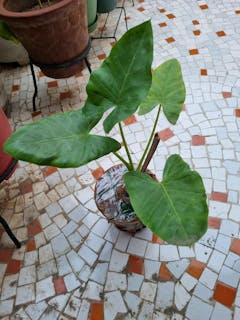Dendrobium Blooming Orchids
Family
Epidendroideae
Origin
Northern Australia
Description
Dendrobium orchid plants are epiphytic by nature and require good light and ventilation. The antelopes typically have twisted sepals and upright, twisted petals that suggest an antelope s horns, and have a wider color range. The Dendrobium orchid flower occurs in almost every imaginable color. The flower spikes can be over two feet tall with over twenty blooms on them. The flowers last for 6 to 8 weeks and they make excellent cut flowers. The blooms are all the colors of the rainbow - pinks, lavenders, reds, yellows, oranges and many mixed color combinations. Lavender or white flowers are borne in profusion on a well-grown plant and are long lasting. They are a prolific group in which offset plantlets are frequently produced on the cane. When each offset has produced several aerial roots, it can be cut from the parent plant and will frequently flower after one year of growth.
Environment
Dendrobiums prefer warmer household temperatures of 20 to 27 C during the day and just slightly cooler at nights, 18 to 22 C . For optimal performance, cooler winter days, 18 to 21 C are recommended.
Spathulate Dendrobium requires the medium to high light of an east or shaded west or south window. Leaves normally a vibrant green, but will bleach if plant gets too much light or darken if not enough light is given.
Water generously, let the soil dry between watering. Do not let stand in water. Water every 5 to 8 days during summer and every 7 to 10 days during winter.
Dendrobiums appreciate higher humidity than other house plants. Humidity should be between 40%-60 % to be optimum. In the home, placing the plants in orchid humidity trays is the best way to go.
Fertilize at - strength with 28-14-14 at every watering to promote new growth. When new growth matures, start fertilizing with 10-30-20 at half strength to promote flowering.
Potting & Media
Grow these orchids in small deep pots to accommodate the large furry root system. You can pot them in bark, perlite, charcoal along with sphagnum moss to retain moisture.
Alternatively, you can substitute bark with coconut husk chips as they do not break down as quickly. Just be sure to wash coconut husk chips very well to get rid of any remaining salt before potting. Salt will burn orchids roots.
The warmer-growing Dendrobium orchid species can bloom throughout the year and it is important that repotting for these orchids be done as soon as possible after the flowering period.
Fertilize
Any balanced orchid fertilizer (look at the numbers on the container, 20-20-20, etc.) can be used to fertilize your orchid. Weakly ( strength), weekly works well. Once a month use clear water to flush any accumulated salts from the potting mix.
Landscape Use
Houseplants
https://www.youtube.com/watch?v=OAPB0rCn3IU
https://www.youtube.com/watch?v=Zve4EaM5Lsk



















